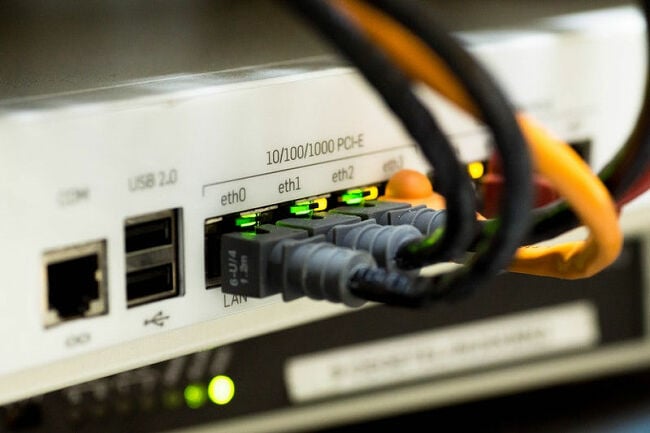Port Forwarding – What is it & How Can it Help You in 2025?
Port forwarding or “tunneling” keeps unwanted traffic off networks. By enabling a computer or network device to access other devices from outside the local network, port forwarding intercepts data traffic heading for a computer’s IP or port combination and redirects it to a different IP and/or port.
The host normally runs the program on the destination computer but it can also be run through intermediaries such as a proxy server, router or firewall. Despite the host using this method to hide their location and/or IP address, those sending data to the server will not be aware of its existence and the information will reach its final destination untouched.

Although it’s quite a familiar term, not everyone fully understands what port forwarding means, entails, or how it works. It’s not only used by expert programmers but is something we can all use to better protect our source computer.
As long as exactly what it can offer is clearly understood, port forwarding is something we can all benefit from. Here, we have outlined exactly what port forwarding is, what it does, how it works, and how it can benefit you. Editor’s Note: We value our relationship with our readers, and we strive to earn your trust through transparency and integrity. We are in the same ownership group as some of the industry-leading products reviewed on this site: ExpressVPN, Cyberghost, Private Internet Access, and Intego. However, this does not affect our review process, as we adhere to a strict testing methodology.
What is a Port Exactly?
A port receives information traveling from one place to another. It allows information and data to flow from a program on your computer, or to your computer from either the Internet or a separate computer on the same network.
Ports are numbered for consistency and programming purposes. It’s typical for identical system services or functions to use the same port numbers on receiving servers. Port numbers and the user’s own IP address create the “who does what” information retained by every Internet Service Provider.
Okay, so What Does it Mean to Forward a Port?
When you use port forwarding, you are redirecting the information and data between a computer on a local network, and a computer on an outside network. This could be your next door neighbor, or someone living halfway across the world.
This is essentially a process that intercepts data on its way to a particular computer’s IP address, and then redirects it toward an entirely different location. You are forwarding that port to a different computer, which is docking the data from the original computer as it’s sent.
How Does Port Forwarding Work?
Port forwarding is the best way to preserve an IP address. It can protect both clients and servers from hacks and help improve your system – it is more commonly used to protect public IP addresses. Port forwarding can “hide” both services and servers on a network, but most importantly adds an extra layer of security to networks.
Port forwarding is the most effective means for keeping unwanted traffic off networks. It allows networks to use just one IP address for all external communications while using multiple ports and IP addresses internally.
Port forwarding can be best described using the following example:
For whatever reason, let’s say you have a friend in another city who wants to control your computer. This means they can use your computer from wherever their computer is situated, just as if they were sitting in front of your terminal.
To access your computer, your friend will open up a remote desktop program, then send the request to your IP address, using a specific port number. In this case, let’s say it’s port 3389. That request then travels through the internet, and arrives at your router. Once it gets to your router, the router itself needs to know where to send the request.
At this point, if your router hasn’t been commanded to forward any requests from port 3389, it won’t know what to do, and will deny the request. But since you have already set up the port forwarding for 3389, it will allow the request to go through, and establishes a connection, allowing data to communicate back and forth freely.
This process is similar to how a switchboard works when you call a business that uses numerous extension numbers. For instance, let’s say you want to call a particular department of a business that uses extension 405. You first dial the company’s phone number, and when prompted, enter the extension number, which directs your call to the location of that extension. Port forwarding follows a similar concept.
Types of Port Forwarding
There are three main types of port forwarding, each with different intentions and functions.
Local Port Forwarding
Local port forwarding is the most commonly used form of port forwarding which forwards data securely from a client application running on your computer. It allows the user to connect to another server through a secure tunnel and sends the information and data to a specific destination or port. Firewalls that block certain pages can also be bypassed when using local port forwarding.
Remote Port Forwarding
This type of port forwarding allows anyone on the remote server to connect to a TCP port. Remote port forwarding is useful in establishing outside access to an internal web server, most often used by remote workers when accessing a secure server from home.
Dynamic Port Forwarding
This is a rare from of port forwarding which allows you to break through a firewall using what’s known as firewall pinholes. It allows clients to establish a secure connection via a “trusted” server that functions as an intermediary, transmitting data to other servers. It can be used to provide additional security for a user connected to an untrusted network, in a coffee shop or hotel, for example.
Why Use Port Forwarding?
Port forwarding is quite versatile, and can serve a number of different functions that range from improved security and blocking unwanted access, to playing video games, managing home camera access, and more. There’s also the benefit of remote computer access and hiding yourself or your network from prying eyes.
Gaming Uses
- Forward ports to online gaming consoles
- Allow friends to access your gaming server
- Set up your own personal server
Security Uses
- Test a port
- Recover router passwords
- Protect against DDoS attacks
General Uses
- Access home security cameras
- Access your computers from anywhere in the world
- Get around firewalls
- Speed up file downloads on torrents
- Increase your router’s performance
- Send requests across servers without revealing the original location or IP address
Port Forwarding and VPN Usage
Using a standard VPN connection when port forwarding is not recommended, but an increasing number of VPN providers are now offering their own port forwarding options. These services give you the same access and functionality of port forwarding, without leaving your information and privacy vulnerable to attack.
This is especially valuable if you are using a P2P connection to download torrents. It is worth noting that if your VPN provider does not have a port forwarding option, it cannot support torrent uploading, but can support downloading. If your VPN supports both, it definitely offers its own port forwarding option which is worth utilizing.




Leave a Comment
Cancel